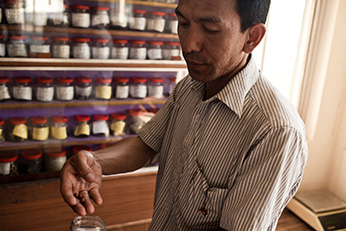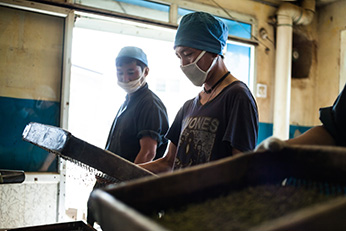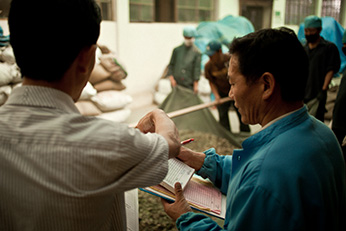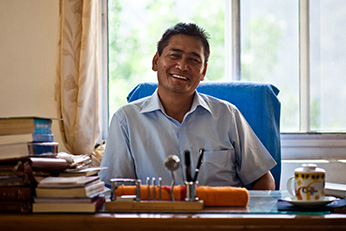

Sowa Rigpa
Tibetan medicine or “Sowa Rigpa” is one of the five major Tibetan sciences. It is a professionally organized health resource based on a highly complex and sophisticated system of medical theory, diagnosis and treatment. It acquired its contemporary form in 7th century Tibet through a synthesis of Indian, Chinese, Greek/Persian, and indigenous medical knowledge. Today, Sowa Rigpa is practiced under different names in the Tibetan areas of China, in India, Bhutan, Mongolia, Nepal, and Buryatia, as well as in Tibetan diaspora communities around the world.
Pharmaceuticalization
Over the past two decades, a Sowa Rigpa industry has begun to emerge, based on the mass-production of Tibetan pharmaceuticals. This development coincides with the pharmaceuticalization, commodification, and globalization of Tibetan medicine. That is, Tibetan medicine is increasingly reduced to its material objects (mostly herbal pills) and thereby transformed into a commodity, which can then be distributed and sold worldwide.


Development
The Sowa Rigpa industry is still in its infancy, despite its recent boom and relatively high degree of development in China. So far, its scope remains limited to China, India, Mongolia and Bhutan, where Sowa Rigpa enjoys official recognition as part of the national health policy. The same countries are also heavily invested in developing their traditional pharmaceutical industries, based on – or at least including – Sowa Rigpa.
Globalization
Traditional pharmaceuticals constitute an integral part of Asia’s innovative knowledge industry and its growing economic power. The transnational Sowa Rigpa industry therefore holds more than a specialist’s interest: as a small but illustrative part of a larger phenomenon, it affords us much-needed insights into ongoing social, economic, and political processes that affect health care on a global scale.


